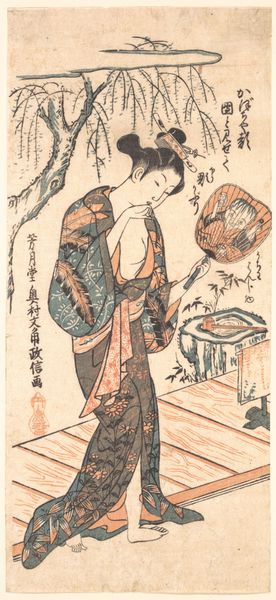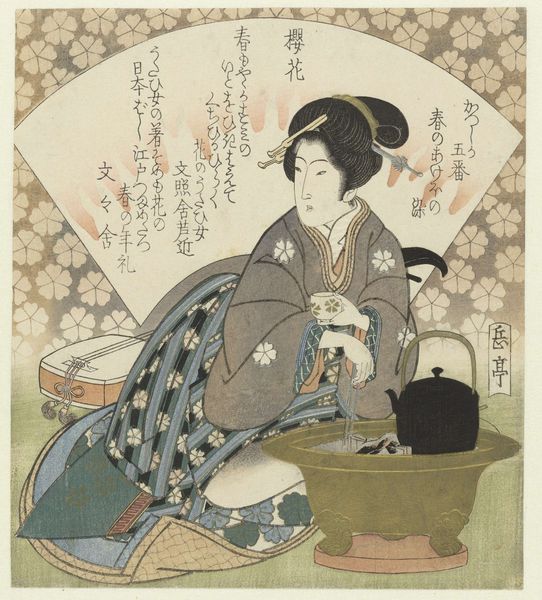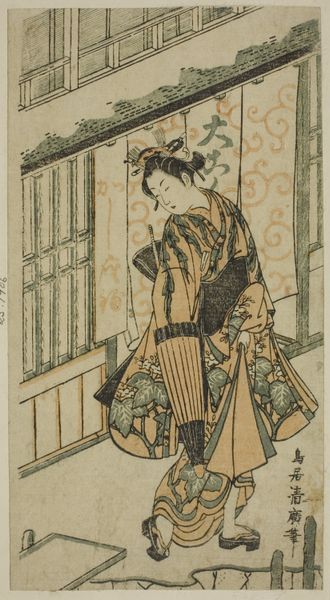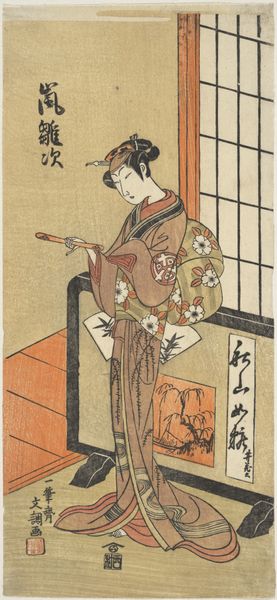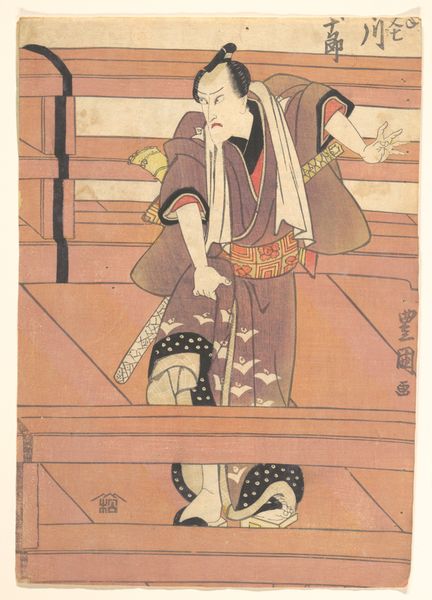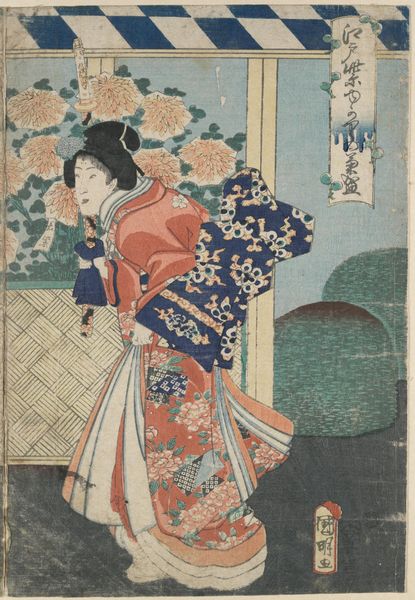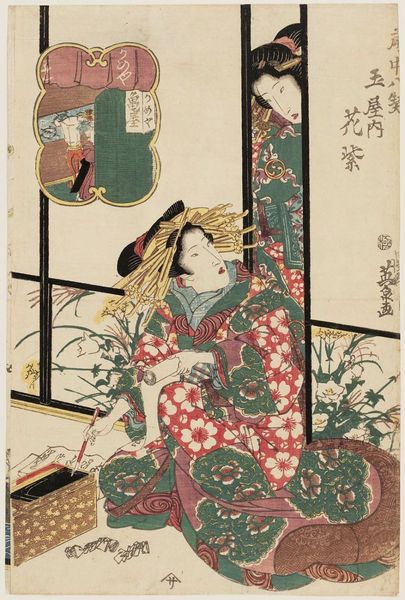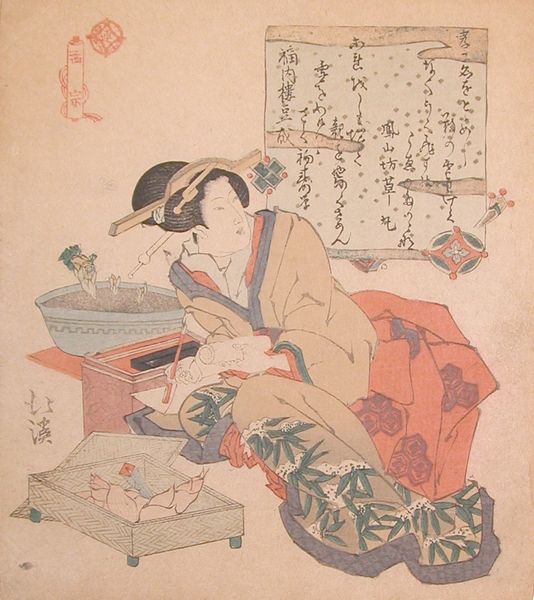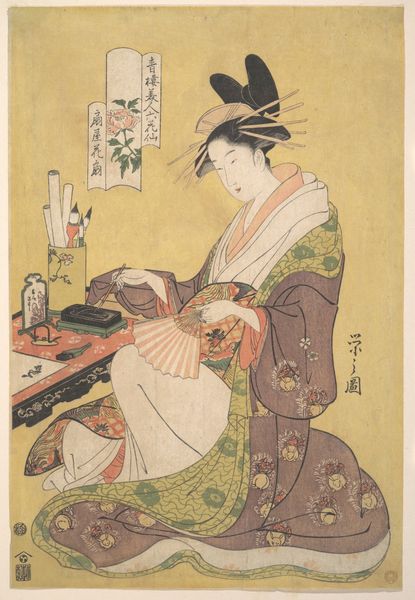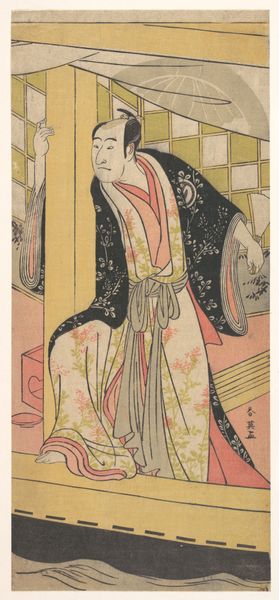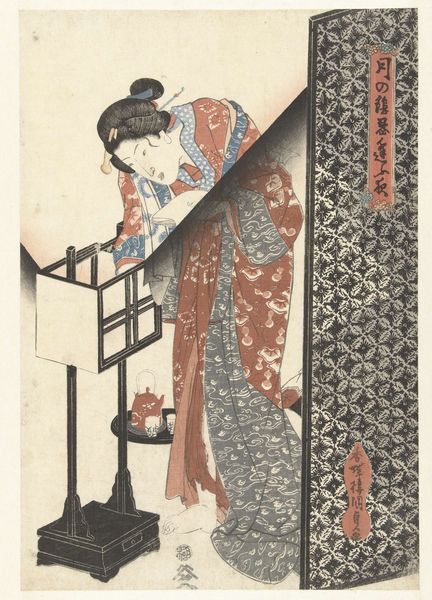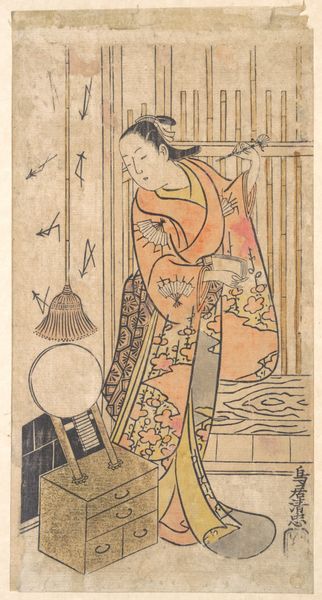
Actor Nakamura Kiyosaburō as Oroku of the Yamatoya Teahouse c. 1749 - 1754
0:00
0:00
#
pen drawing
#
mechanical pen drawing
# print
#
pen illustration
#
pen sketch
#
japan
#
personal sketchbook
#
ink drawing experimentation
#
pen-ink sketch
#
pen work
#
sketchbook drawing
#
sketchbook art
Dimensions: 12 1/4 × 5 3/8 in. (31.1 × 13.7 cm) (image, sheet, hosoban)
Copyright: Public Domain
Editor: This is *Actor Nakamura Kiyosaburō as Oroku of the Yamatoya Teahouse*, a print by Torii Kiyohiro from around 1749 to 1754. There's a stillness to the figure, almost like she's caught mid-performance. What do you see in this work, especially considering its time? Curator: This print gives us a glimpse into the complex social dynamics of Edo-period Japan. These actor prints, called *yakusha-e*, were incredibly popular. They functioned almost like celebrity endorsements. But let's consider the layered identities here. We see Nakamura Kiyosaburō, a male actor, portraying Oroku, a female teahouse server. How does this cross-dressing – and its artistic representation – challenge or reinforce social norms? Editor: So, it's more than just a portrait; it’s about constructed identities. Curator: Exactly. The *yakusha-e* tradition intersects with gender roles and class distinctions. The teahouse was a public space, a site of commerce and entertainment. The actors were celebrities, yet often viewed with ambivalence. Can we interpret the subject’s almost stylized presentation as an acknowledgement – and even subversion – of expectations? The print aestheticizes what may have been controversial social activities at that time. Editor: It’s interesting to think about how entertainment could be both rebellious and conformist at the same time. So this work captures that complexity. Curator: Precisely! And notice how the artist positions her in the space, both part of the tea house but also separate from it. How might you view that today, thinking about similar themes? Editor: I hadn't considered all of those layers! It makes you think about how the image functions both as art and as social commentary. Curator: Indeed! Context can dramatically change the way we look at art and what it means.
